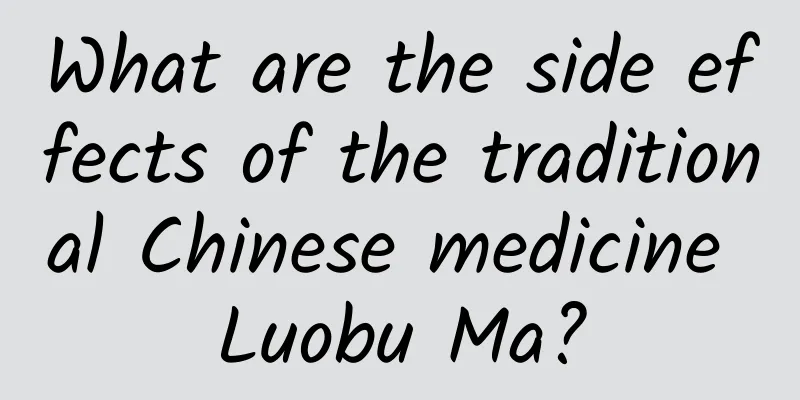The efficacy of Chinese medicine Qing Banxia

|
Qing Banxia is a common medicine in traditional Chinese medicine. Many people are puzzled by the main function of Qing Banxia. They don’t know what kind of diseases Qing Banxia can be used to treat, nor do they know what the main functions of Qing Banxia are. Many people use Qing Banxia to relieve cough and resolve phlegm. When suffering from pneumonia, they will think of using Qing Banxia to treat it. This is enough to prove that the effect of Qing Banxia is quite good. So what are the effects of the traditional Chinese medicine Qing Banxia? Qingbanxia is the tuber of Pinellia ternata (Thunb.) Breit., a plant of the Australaceae family. Other names: ground text, water jade, Qing Banxia, Shigu, sheep eye Banxia, Hegu, scorpion grass, ground pearl Banxia, Ma Yuguo, three-step jump, pan stone, ground partridge, old monk head, wild taro, sky falling star, etc. The dry tubers are spherical, semi-spherical or oblique. The surface is white or light yellow, and the uncleaned skin has yellow spots. The upper end is mostly round and flat, with a sunken yellow-brown stem scar in the center, surrounded by densely covered brown concave root scars. The lower side is blunt and smooth, with a solid and dense texture. The longitudinal section is kidney-shaped, white, and powdery; if the texture is old or the drying process is not appropriate, it will be grayish white or have yellow stripes. The powder is pungent and spicy when you smell it, sticky when you chew it, and it numbs your tongue and stings your throat. The best ones are those with large size, clean skin, white color, firm texture and sufficient powderiness. Nature and flavor: pungent, warm, toxic. Enters the spleen and stomach meridians. Functions and indications: Drying dampness and resolving phlegm, relieving adverse reactions and stopping vomiting, eliminating lumps and dispersing nodules. It is used to treat damp phlegm and cold drinks, vomiting, nausea, cough and asthma with excessive sputum, chest distension, phlegm-induced headache, dizziness and insomnia. Eliminate carbuncles and swellings externally. Dosage and Administration: For oral use: decoct in water; or make into pills or powder. For external use: grind into powder and apply on skin. Do's and Don'ts: Those with any blood syndrome, yin deficiency, dry cough, loss of body fluid and thirst should not take it. ① Raw Pinellia is spherical or oblate in shape, of varying sizes, white or light yellow, powdery, and pungent in taste, numbing the tongue and pricking the throat. ②Qing Banxia is white and transparent flakes, hard and crisp, with a slightly spicy and astringent taste. ③ The processed Pinellia is yellow or light yellow, with relatively uniform particles, loose texture and sweet and light taste. ④ Ginger Pinellia is light yellow flake-shaped, hard and crisp, and tastes spicy. These are the various effects and functions of the traditional Chinese medicine Qingbanxia. Choosing Qingbanxia to boil also has the effect of detoxification. If you suffer from a disease that requires the use of Qingbanxia, you must promptly use the effects of Qingbanxia to treat yourself. When using Qingbanxia to treat the disease, pay attention to safe dosage, and it is best to strictly follow the doctor's medication rules. |
<<: The efficacy of traditional Chinese medicine Sanbai Decoction
>>: The efficacy of the traditional Chinese medicine goose does not eat grass
Recommend
It suddenly gave their world a sound.
The sound of traffic on the street, The sound of ...
The efficacy and side effects of drinking Astragalus and Hawthorn in water
Talking about Scutellaria baicalensis, everyone s...
The efficacy and role of chemical drugs
Friends who don’t know chemical medicine will not...
Why do airplanes fly? The secret lies in their wings
"It's so fast that it's about to fly...
Removing barriers: A new path for fintech report
MagnaCarta and Klarna have released a new report,...
The efficacy and function of Dicranopteris dichotoma
Dicranopteris dichotoma is a famous traditional C...
What are the functions and effects of Herba Discoloris
Do you know what is Herba Dioscoreae? Herba Diosc...
Do birds have a strong sense of smell? Only slightly better than dogs and a little better than humans!
First, please answer two questions: Where is a bi...
Beware! Several major killers that have taken away the health of hundreds of millions of Chinese people are seriously threatening your life span! !
Readers who often read popular science articles k...
Is adding chlorine to tap water harmful to the body?
We all know that chlorine is a toxic gas with a s...
How did humanity win the 3,000-year history of fighting smallpox?
Infectious diseases are the endless enemy of huma...
This northern fruit that looks like a lantern, I bet people in the south have never seen it
There is a small fruit on the fruit stalls in the...
Quantum secure communication: Slowness is not a problem, security is enough!
What is your home internet speed? Gigabit Etherne...
The efficacy and function of Kudzu flower
Modern medical research believes that Pueraria lo...









